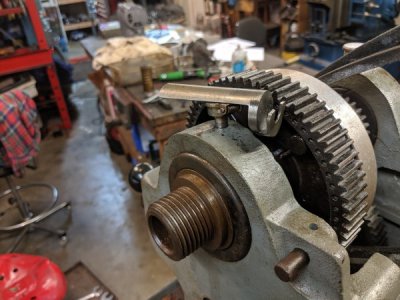- Joined
- Oct 5, 2010
- Messages
- 1,043
As you may have read in my earlier post. I am the owner or a brand new 40-year-old 101 28990 lathe. Forty years is a long time for an unmaintained piece of machinery to sit in a garage in Southeast Texas. Everything needs to be disassembled and reworked. I now have all the major components separated. I can't seem to get the back gear pin to move. I presume that the aluminum boss has corroded and locked the pin in place. I even made a tool to move it and just managed to bend the tool. It's really stuck. It has been soaking in Kroil for the past two days. Anybody got any suggestions for getting it loose? I would prefer not to have to disassemble the spindle assembly but that seems like the only solution 
Will that pin rotate in place or does it just slide in and out?
Thanks
Randy
Will that pin rotate in place or does it just slide in and out?
Thanks
Randy


